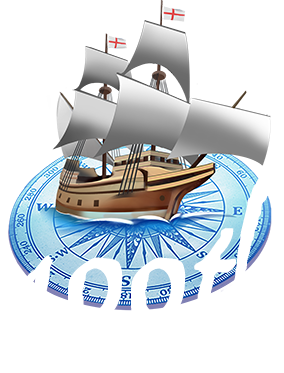Carved on stone in Plymouth is a message of deep gratitude to God. This article explores that message in the context of “Faith, Morality, Law. Education and Liberty” - The DNA of a free nation.
“... in the name of the Fathers we dedicate this monument and ourselves. For ages it will stand the enduring witness to grave and resolute conduct; to privations and sacrifices; to thrift and frugality; to domestic love and unaffected piety; to rectitude in thought as well as in life; to earnest principles and true beliefs; to Christian fidelity and faith... here and now we rededicate ourselves to a more fervent love for man as man; to a braver allegiance to truth for truth’s sake, and this ‘in the name of God’ and Amen and Amen!” William C.P. Breckinridge at the 1889 Dedication of the National Monument to the Forefathers.
Standing at a towering 81 feet and overlooking Plymouth Harbor, the National Monument to the Forefathers may be the most complex and self-consciously Christian landmark in the United States. Impressive in stature, its message is the soul of the inspiration it communicates - that faith, morality, law, education and religious liberty are the prerequisites of a free and prosperous nation.
The vision to honor the sacrifices of the Pilgrim with a monument was first cast during the waning years of the presidential administration of George Washington when Joseph Coolidge made a one guinea donation.
A quarter of a century later during the Plymouth bicentennial of 1820, the concept was revived, but it would not be for another thirty years that the work formally began. The National Monument to the Forefathers was officially dedicated on August 1, 1889, after nearly a century of challenges to complete the project including the death of key visionaries, the lead sculptor and architect, funding problems, and challenges resulting from the Civil War.
Hammatt Billings
Behind the design and construction was the brilliant Boston architect, illustrator, and sculptor, Hammatt Billings. His original concept had been a landmark comparable in stature to the Colossus of Rhodes. Although the final version would be half that size, the result was an impressive balance of aesthetic beauty, historical detail, and philosophical importance.
Here was the Pilgrim message, the voice of our Plymouth Founding Fathers speaking from the grave. Etched in beautiful reliefs and written on stone - the DNA of American freedom - a reminder to future generations that our national prosperity emerged from Gospel foundations.
The Faith Monument
Impressive in scope and stunning for the clarity of the vision of it communicates, The National Monument to the Forefathers has been nicknamed “The Faith Monument” in honor of the defining quality of the Pilgrims and the central figure of the monument. It is a monument which begins with the faith of the Pilgrims in England and concludes with their landing on Plymouth Rock.
The statue of Faith while under construction
Faith stands resolute and unwavering adorned by the four symbols which defined the philosophy of Pilgrim and Founding Father alike:
1. The Word of God as Revelation - Faith holds the open Bible in her hand.
2. Christ as the Hope of Mankind - Faith’s finger is pointed to Heaven representative of the Pilgrim belief that there was one path to redemption, and one mediator between God and man, Jesus Christ.
3. Reason as the Tool of Freedom - The star in the forehead of Faith is a symbol of honor and a reminder that the Pilgrims believed that the regenerate mind was obliged to begin with the foundation of Biblical revelation, and apply reason to all of life.
4. The firm foundations of American freedom are represented by Faith stepping forward with her left foot on Plymouth Rock. This was a nod to the doctrine of Providence - the belief held by Christian reformers and Pilgrims alike, that God governs and directs the affairs of men.
The Seated Statues
Around Faith are four seated statues each of which represents the necessary elements which the Pilgrims and America’s founders believed a prerequisite for a nation to experience freedom and prosperity - Morality, Law, Education, and Liberty.
Dr. Paul Jehle has observed: “The Pilgrims believed that religious liberty preceded civil liberty. The first was internal, the second external. Religious liberty gave rise to civil liberty in society.”
This perspective is a fitting beginning to understand the context of the National Monument to the Forefathers. Internal religious liberty is represented by Faith and Morality. External liberty is manifest by Law, Education, and Liberty.”
To put it another way, American freedom began with the devout Christian faith of our Pilgrim fathers and mothers. That faith produced the internal desire for a moral people to establish a society built on righteousness. The implications of this internal faith and moral conscience was an acknowledgment of God as the lawgiver. To this end, the nation must cultivate a literate and educated citizenry knowledgeable in the Word of God and the covenantal nature of their government. Where faith produces morality, and morality leads to just laws and an educated people, the people will “proclaim liberty throughout the land,” tyranny will be suppressed, and blessings follow.
The Reliefs
Beneath Morality, Law, Education, and Liberty, respectively, are reliefs which tell the Pilgrim story and amplify the message of the seated figure above.
Under Morality is “Embarcation” - a relief depicting that moment when the Pilgrims left their beloved Pastor John Robinson for the New World having been charged by him to build a civil society on love and moral integrity.
Under the statute of Law is “Treaty” - a pictorial reminder that the Pilgrims entered a just and mutually beneficial treaty with the local Wampanoag based on a higher law which ensured fair treatment and mutual respect between the communities.
Under "Education" is “Compact,” a testimonial to the iconic signing of the Mayflower Compact which became a model of free and educated men covenanting together to form a civil body politic and establishing a model for future documents of freedom like the Declaration of Independence.
Beneath "Liberty" is the relief “Landing" - a depiction of the moment when the Pilgrims stepped foot on Plymouth Rock.
Monumental Gratitude
"National Monument to the Forefathers. Erected by a grateful people in remembrance of their labors, sacrifices, and sufferings for the cause of civil and religious liberty.” Front panel on the National Monument to the Forefathers
This October 2021, Americans will celebrate the 400th anniversary of the first Pilgrim thanksgiving feast - the celebration which became a model for our national day of gratitude to God. As we approach this special moment in history. The National Monument to the Forefathers stands as an ever-present reminder that our nation has a unique and exceptional identity rooted in faith and manifested in a recognition that morality preserves a nation, that a recognition of God as lawgiver grounds a nation, that Education advances a nation, and that political freedom is the outworking of these attributes. The Monument also reminds us that we are called to be a grateful people, like the Pilgrims themselves.
"Thus out of small beginnings greater things have been produced by His hand that made all things of nothing and gives being to all things that are; and as one small candle may light a thousand, so the light here kindled hath shone unto many, yea in some sort to our whole nation; let the glorious name of Jehovah have all praise.”William Bradford, Of Plymouth Plantation, and etched on the rear panel of The National Monument to the Forefathers.









